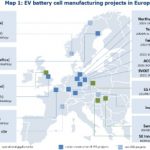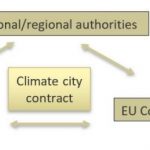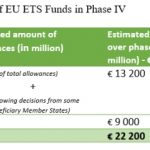The U.S. Department of Energy (DOE) is allocating $8bn for building regional clean hydrogen hubs. Decisions on who to fund are being made now and will be completed by the end of this year. Any methane-based hydrogen project that achieves a 95% carbon capture rate will be sufficiently “clean” to qualify for the federal funding. But, as Suzanne Mattei, David Schlissel and Dennis Wamsted at IEEFA explain, the few “at scale” CCS projects now running … [Read more...]
Europe vs U.S: incentivising battery manufacture to take the global lead from China
Europe is already well placed to end its reliance on Chinese Li-ion battery cells by 2027, according to a study by Transport & Environment (T&E). The new analysis of battery-makers’ announcements points at Europe producing enough Li-ion cells to fully meet domestic demand for EVs and energy storage in four years’ time. T&E also forecasts that essential elements of the supply chain can substantially shift from China into Europe, like … [Read more...]
COP 27: “Loss & Damage” can become the fourth pillar of climate action, along with mitigation, adaptation and finance
COP27 saw two major outcomes on the finance front: the creation of a “Loss and Damage” fund and a call to reform international financial institutions. It made fewer, if any, advances to reduce emissions, and narrowly missed sending a global call to phase down oil and gas consumption. But funding the emissions reductions of developing and vulnerable nations was a gap that had to be filled, and so this is a big step forward, explains Lola Vallejo … [Read more...]
Industrial Policy: China’s always had it, the U.S. has rediscovered it, the EU now needs it too
China’s performance – both in and outside the energy sector – has always been driven by wide-reaching industrial policy. In the last few decades it has consistently delivered results. Meanwhile, the U.S. has kept shifting up the gears of its pro-U.S. interventionist industrial policy since Donald Trump: though socially right wing, he was a protectionist president whose ambition was to boost domestic industries. Today, president Biden’s “Inflation … [Read more...]
China: decades of support for innovation is now delivering results
The evolution of China’s clean energy sector used to be based on a technology catch-up approach, which meant secondary innovation based on imported technologies. Daisy Chi at ECECP looks at the IEA’s recent report, “Tracking Clean Energy Innovation: Focus on China”, to conclude that the nation is now a major force in clean energy innovation. Decades of innovation-focussed policies, strong funding support, institutional reforms, big targets and … [Read more...]
Copenhagen will miss its 2025 net-zero target: a case study of how pledges fail
Copenhagen is going to miss its 2025 net-zero target. The reason can be taken as a template for why we may soon see other failing pledges from governments and corporates. Kirstine Lund Christiansen at the University of Copenhagen and Inge-Merete Hougaard at Lund University explain that Copenhagen’s emissions overspill stems from an unrealistic dependence on technology when the promise was first made in 2012. As the target date got closer, other … [Read more...]
New U.S. ‘Buy Clean’ plan earmarks billions for low-carbon cement, steel and other building materials
New guidance from the U.S. federal government, combined with historic Inflation Reduction Act investments, could turbocharge markets for low-carbon cement, steel, and other building materials. Victor Olgyay, Anish Tilak and Connor Usry at Rocky Mountain Institute explain how the new “Buy Clean” recommendations will mean the procurement of green building materials for federal building and transportation projects. That will lead to a boost in … [Read more...]
“New Collective Quantified Goal”: how much should rich nations pay developing nations for climate mitigation?
Is the $100bn a year promised by rich nations to developing ones to assist their climate mitigation plans enough? Almost certainly not, explains Mahlet Eyassu Melkie at Rocky Mountain Institute. That number was pretty much plucked out of the air for political reasons. To come to an evidence-based number, a great deal of assessment, analysis and finally agreement is needed internationally. That process is called the New Collective Quantified Goal … [Read more...]
Central and Eastern Europe’s buildings renovation plans fall far short of 55% emissions cuts
There are big decarbonisation gains to be had in a renovation wave in Central and Eastern Europe (CEE) precisely because their building stock is very energy-inefficient, explains Christophe Jost at CEE Bankwatch. But Bankwatch's report on eight national plans - Bulgaria, Czechia, Estonia, Hungary, Latvia, Poland, Romania and Slovakia – reveals weaknesses in scale, funding, strategy and policy. Many are planning to comply with only the former 40% … [Read more...]
Green EV Batteries: tighter rules can advantage and boost manufacturing in Europe
Policies like the “green” labelling of EV batteries would give a significant advantage to European manufacturers, as well as accelerate the cleaning up of the supply chain. EU firms are better than most foreign battery manufacturers at monitoring and reducing emissions, writes Carole Mathieu at the IFRI Centre for Energy & Climate, referencing her report “Green Batteries: A Competitive Advantage for Europe’s Electric Vehicle Value Chain?” The … [Read more...]
Climate Neutral Cities can be the key to winning public support for the European Green Deal
The EC is currently considering a mission proposal to achieve “100 climate neutral cities by 2030 – by and for the citizens”. Arguing for its endorsement and the proposed umbrella governance, Simon Skillings and Eleonora Moro at E3G explain why cities are an ideal laboratory for tackling the big unanswered question: which European Green Deal (EGD) pathways will win genuine public support. No one should doubt that the EGD will be disruptive. So … [Read more...]
The Road Transport Transition: a policy toolkit for electrification
For the electrification of road transport, planning, incentives, the removal of barriers, and the right regulatory framework are all needed. But different regions with different rural and urban lifestyles will each need their own solution. Camille Kadoch at RAP summarises their RAP EV Roadmap for the U.S. which provides a toolkit for assembling your unique solution. It includes targets, funding sources, policy coordination, incentives (including … [Read more...]
How do we accelerate EU decarbonisation now?
The economic stimulus needed to overcome the current pandemic requires significant resources. But it comes at a time when we need to accelerate the energy transition, which is currently part of the European Green Deal and will also require an increase in resources. Andrei Marcu at ERCST examines how the transition will be funded, what are the sources of funding and how they relate to and will be impacted by the current health situation. A range … [Read more...]














